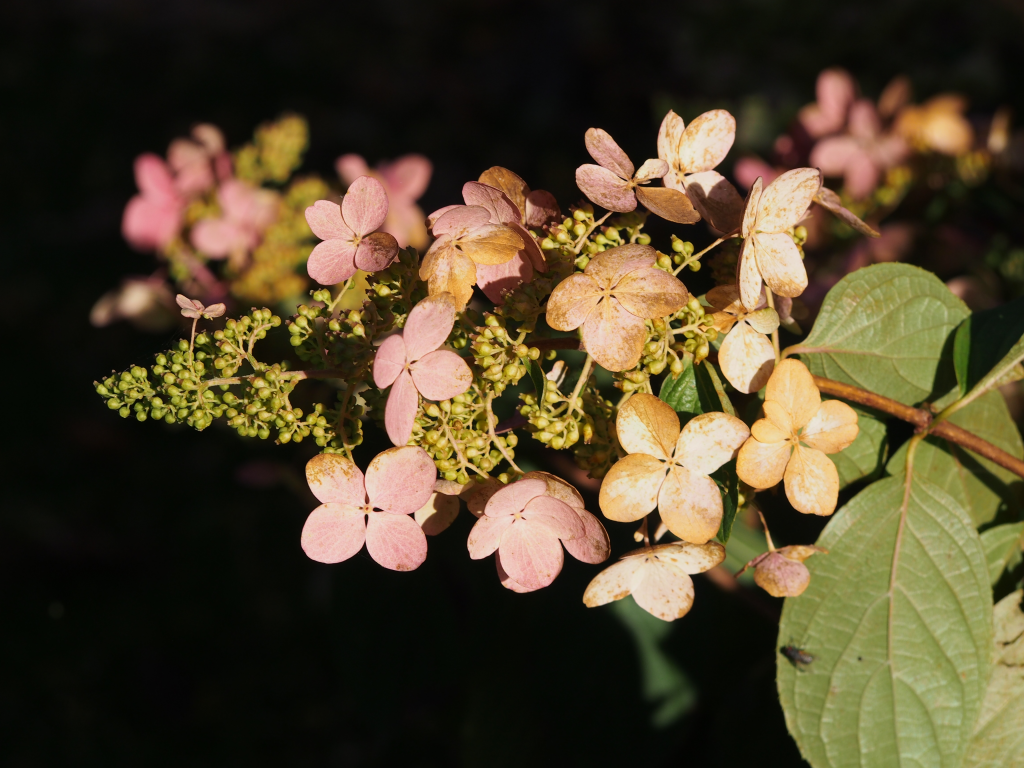
Hydrangea paniculata is a deciduous woody shrub growing up to 12′ tall. It is native to eastern and southern China, Japan, Sakhalin, Taiwan, and Kuril Island and belongs to the Hydrangeaceae plant family that also includes waxflower, mock orange, and Deutzia. The cultivar ‘Tardiva’ is well known for its pyramidal, lacy, flower heads that are made up mostly of sterile flowers and open from late summer into fall on the new season’s growth. Each flower head is up to 8″ long and made up of fertile flowers located below numerous loosely packed sterile flowers that are white turning purplish pink with maturity. The flowers are attractive to butterflies and are good for fresh or dried arrangements. The dark green leaves are oval, up to 6″ long, and have serrated margins. H. paniculata ‘Tardiva’ is especially valued for its late bloom time and is a good choice for a shrub border, butterfly garden and cottage garden. The genus name, Hydrangea, comes from the Greek words ὕδωρ ( húdōr) meaning water, and αγγεῖον (angeîon) meaning vessel, and refers to the shape of its seed capsules. The specific epithet, paniculata, comes from the Latin word pānicula, meaning swelling, and refers to the form of the inflorescence. The cultivar name ‘Tardiva’ is from the Latin word tardus meaning late/tardy, and refers to the late bloom time of the plant.
+
Type: Woody flowering deciduous shrub
Outstanding Feature: Late bloom time and color of flowers
Form: Vase-shape
Growth Rate: Rapid
Bloom: Pyramidal lacy white flower heads of sterile and fertile flowers from late summer into fall, turning purplish pink with maturity
Size: 8-12′ H x 7-10′ W
Light: Full to partial sun
Soil: organically rich, consistently moist, well-drained
Hardiness: Zones 3-8
Care: Thin plant to 5-10 primary shoots for larger flowerheads; prune in late winter or early spring; mulch to keep roots cool.
Pests and Diseases: Susceptible to damage by aphids, mites, nematodes, scales, bud blight, bacterial wilt, leaf spot, rust and mildew.
Propagation: Softwood cutting in early summer, hardwood cuttings in winter
Photo Credit: Wikimedia Commons